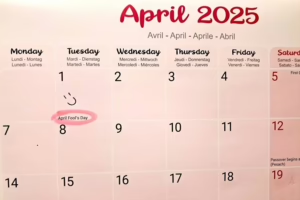The talent market is highly competitive today, and organisations need to rethink their approach to acquiring and retaining talent. It is not sustainable to keep communications and employer branding in the marketing department, especially with the high stakes. HR must be at the forefront of the battle for top talent.
Why? Employer branding is different from traditional marketing. It is a strategic function that drives performance, growth and revenue. Communication and employer branding influence the quality, engagement and retention of talent, which is the fuel for your company’s growth. Many boards, CEOs and executive teams overlook or do not understand this critical difference. You’re already lagging behind industry leaders if your organisation doesn’t integrate communications and employer branding in HR. It’s time to rethink how you do things to remain competitive.
It is a fact that if you get this right, it will have a significant impact on your bottom line. HR can influence the acquisition of talent, reduce turnover and accelerate growth when they own communications and employer branding. This leads to better business outcomes, a stronger reputation and more long-term revenue. HR’s employer branding role is more than just filling positions. It’s also about driving innovation and advancing your organization.
Internal brand alignment: the foundation for real business value
You must align your internal culture and the message you send out to the outside world before you can attract top talent. Engaged employees will be your strongest brand ambassadors. They are the ones that will sell and retain new talent. If your internal narrative doesn’t match your external narrative, it can lead to employee disengagement and lower morale. This will affect your bottom-line.
Here, HR can play a crucial role. Transparent leadership and communication, as well as recognizing employee contributions, all contribute to a culture of engagement and satisfaction. When employees are connected to the company’s values and purpose, they will stay longer, be more productive and perform better, which ultimately leads to improved financial results.
Employees who are passionate about your brand can help you attract top talent. Their positive word of mouth and authentic testimonials can be powerful tools to attract quality candidates and lower your recruitment costs.
Turning Employees Into Brand Ambassadors: An Competitive Edge
Most successful companies turn their employees in to brand ambassadors. Employees who believe that your company is a great workplace will promote your brand. Word-of-mouth is a powerful tool, particularly in this age of social media. Employees who are aligned with the culture, mission and values of your organization will spread the word to their network, resulting in a steady stream of quality candidates.
By creating a highly engaged and strong workforce, HR not only increases retention, but also attracts the best talent by leveraging employee advocacy. It reduces costs for recruitment, speeds up hiring and contributes to the agility and scalability of the company.
HR’s role is crucial in creating an internal culture that thrives. It ensures the brand experience promised externally matches the experience of employees on the inside. This alignment is crucial to avoid higher turnover, reduced performance and decreased employee satisfaction, all of which have a direct impact on the bottom line.
Building relationships with passive candidates
It’s no longer enough to post a job online and hope for the best. It is important to build relationships with passive talent before you need a position filled. It takes at least 10 touchpoints, spread over months or even years, before a candidate will apply. Touchpoints include reading your employee stories on LinkedIn, engaging with your social media, and receiving personalized communication. Touchpoints include seeing their peers joining your company, receiving positive feedback from their networks, or noticing the reputation of your company for innovation, flexibility or culture.
By investing in passive talent and building these touchpoints, you can ensure that your company will be at the forefront of candidates’ minds when they have a bad work day, don’t receive the raise they expected, worked all weekend or are looking for a new career. Rather than focusing only on attracting cold talent–those who are actively job hunting–organisations that invest in their passive talent are more likely to see a higher-quality pool of candidates when the time comes to apply.
CEO Leadership: Aligning purpose with people
All too often, company newsletters, blogs and other communications from CEOs focus only on the business performance of their company, its revenue goals and sales targets, ignoring how employees’ contributions are crucial to success. Candidates want to understand how and why their work affects the results of an organisation. They are looking for a purpose — What’s in it For Me -, to know how they can make a difference and why.
CEOs must have a strategic EVP plan (Employee value proposition) that supports talent engagement. They are crucial in converting passive applicants and ensuring that they are recognized as an employer of preference. Many CEOs are reluctant to take on opportunities that don’t directly relate to their products, services or customers. But organisations that excel in employer branding use their CEOs as active advocates. CEOs can be powerful ambassadors of the employer brand by incorporating podcasts, videos and employee testimonials into their communications. These efforts reinforce a company’s values, culture, and purpose. This makes the company seem more authentic and relatable to potential employees.
By positioning the CEO as a leader who champions the company’s culture and values–not just its products or services–organisations elevate their employer brand and demonstrate a commitment to building a great place to work.
Alignment: The key to long-term success
Engagement of existing employees and the attraction of new talent are interconnected. Alignment is the key to a successful employer brand strategy. It ensures that what you promise on your website is what employees actually experience. This alignment is important for retaining top talent and ensuring new hires stay, grow, perform, etc. If HR can ensure that the internal culture and external messages are aligned, your employer branding will become stronger and more credible. This will lead to better results in talent acquisition.
HR is ultimately responsible for creating alignment. HR can ensure that employee engagement and talent acquisition are seamlessly integrated by leading the strategy of both internal and exterior communications. It leads to better retention, more effective hiring, and a talent strategy that is sustainable and drives financial growth and long-term success.
Conclusion:
In 2025, boards, HR executives and leaders will need to rethink their approach towards talent. Boards and HR need to drive the strategic talent discussion, encouraging business leaders beyond traditional marketing to dare to do things differently in order to gain a competitive advantage. Organisations can only leverage their employer brand in this way to fuel growth, reduce turnover and deliver strategic mandates as well as bottom-line results.



